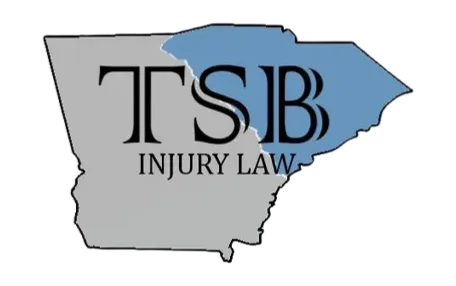Many individuals believe that if an uninsured or underinsured driver caused them to get into an accident, they would have little or no recourse to seek monetary damages from the driver. But innocent victims do have legal options, including the purchase of uninsured and underinsured motorist coverage.
The Law Office of Taylor S. Braithwaite explains the differences between these two policies and the situations in which an Aiken, South Carolina car accident victim would want to use them.
What Is the Difference Between Uninsured and Underinsured Motorist Coverage in South Carolina?
All drivers are required to purchase minimum amounts of automobile liability insurance ($25,000 bodily injury per individual, $50,000 total for all injured individuals, and $25,000 for property damage, also known as 25/50/25). The problem is that many drivers don’t have any insurance.
Those who do may only purchase the above minimums, which are often woefully inadequate to fully compensate a victim’s injuries. This is where uninsured and underinsured policies can prove useful, the difference being:
- Uninsured motorist (UM) coverage: This pays a victim for personal injuries or property damage caused by a driver who is uninsured or who flees the scene of the accident. If either of these situations applies, you would file for coverage through your own insurance company.
- Underinsured motorist (UIM) insurance: The policy will pay (up to policy limits) for your injuries or damages if the at-fault driver doesn’t have enough insurance to cover these damages. The at-fault driver’s policy must first be exhausted.
What Are the Minimum Requirements for Uninsured Motorist Coverage in South Carolina?
When a driver purchases automobile insurance coverage in South Carolina, he or she automatically purchases an uninsured policy in the same coverage amounts. Since the minimum liability amounts are 25/50/25 as stated above, these are also the minimum amounts required for uninsured motorist coverage. A driver cannot purchase uninsured motorist coverage in an amount that is higher than the amount of liability coverage.
How Does A Driver Use Underinsured Motorist Coverage?
If the at-fault driver doesn’t have enough insurance to cover your injuries, that person’s policy must first be exhausted. Then, the victim can turn to his or her own UIM policy, with the potential to use multiple policies in a process known as stacking (described in detail below).
If the victim still has damages that are not covered at this point, there are other options. First, the victim can sue the at-fault driver personally and seek to use his or her assets to satisfy the damages claim. The victim should be cautioned, however, that there is a good chance the victim will have insufficient assets to compensate the victim.
Another option is a situation in which individuals or parties in addition to the at-fault driver can be held liable. For instance, if the at-fault driver was intoxicated at the time of the wreck, but was served too much alcohol by a bar immediately before it happened, the bar can be held liable for overserving the driver.
Can Insurance Coverage Be Stacked?
If you own more than one vehicle, you can purchase insurance coverage for each one and then use them, each one up to its policy limits, if one vehicle is involved in an accident. Stacking is more specifically defined as “the insured’s recovery of damages under more than one policy until all of his damages are satisfied or the limits of all available policies are met.” It should be noted that stacking only applies to the bodily injury coverage portion of insurance, not to property damage.
As an example, a household has three vehicles, each with $100,000 bodily injury per person and $200,000 total bodily injury. One of these vehicles gets into an accident. Because of stacking, the most that any single victim could recover is $300,000 (three times $100,000) for bodily injury while the maximum coverage is $600,000 (three times $200,000) for all victims.
Stacking is only allowed for Class I insured victims (which includes the named insured, his or her spouse, and relatives residing in his or her household). It is not allowed for Class II insured victims (this is any person who, with the consent of the named insured, uses or is a guest in the vehicle that was involved in the accident).
Can UIM Coverage Be Stacked?
The South Carolina uninsured motorist statute allows UIM coverage to be stacked, but there are unique rules that apply based on the following scenarios:
The victim doesn’t own the accident vehicle and it doesn’t have UIM coverage
If the accident victim was in a vehicle that did not have UIM coverage, and the vehicle is not owned by the victim (or a resident relative), the victim can reach back to another vehicle with UIM coverage. However, the victim can only reach back to one of those other UIM policies and should therefore choose the one with the highest policy limits.
The victim owns the accident vehicle and it has UIM coverage
If the victim was in a vehicle of their own and it has UIM coverage, he or she is allowed to stack that coverage with their additional at-home UIM policies. However, the stacking is limited to the coverage amount on the vehicle that was involved in the accident, which is known as the measuring vehicle.
An example can illustrate how this works. If the victim’s vehicle that was in the accident had $50,000/$100,000 of bodily injury coverage on it, and the victim has two other vehicles at home with $100,000/$200,000 of coverage on both, the victim can stack these policies only in the amount of the “measuring vehicle’s” $50,000/$100,000 coverage. This allows a total amount of insurance coverage of $150,000 per person or $300,000 per accident.
The victim owns the accident vehicle but it doesn’t have UIM coverage
Finally, if you are in a vehicle at the time of the accident on which you decided to not purchase UIM coverage, you cannot reach back to any at-home vehicles with UIM coverage. It’s therefore important that all of your vehicles have UIM coverage.
Similar stacking rules apply to UM coverage.
Helping You Receive the Maximum Coverage for Your Injuries
The rules concerning UM coverage, UIM coverage, and stacking can be confusing. Before deciding how much UM/UIM insurance to purchase and how to stack coverage in the event of an accident, you should speak with an experienced attorney.
If you or a loved one were in an accident, TSB Injury Law is here to make sure you receive the maximum coverage for your losses. Give us a call at (803) 220-0000, or contact us online today.



